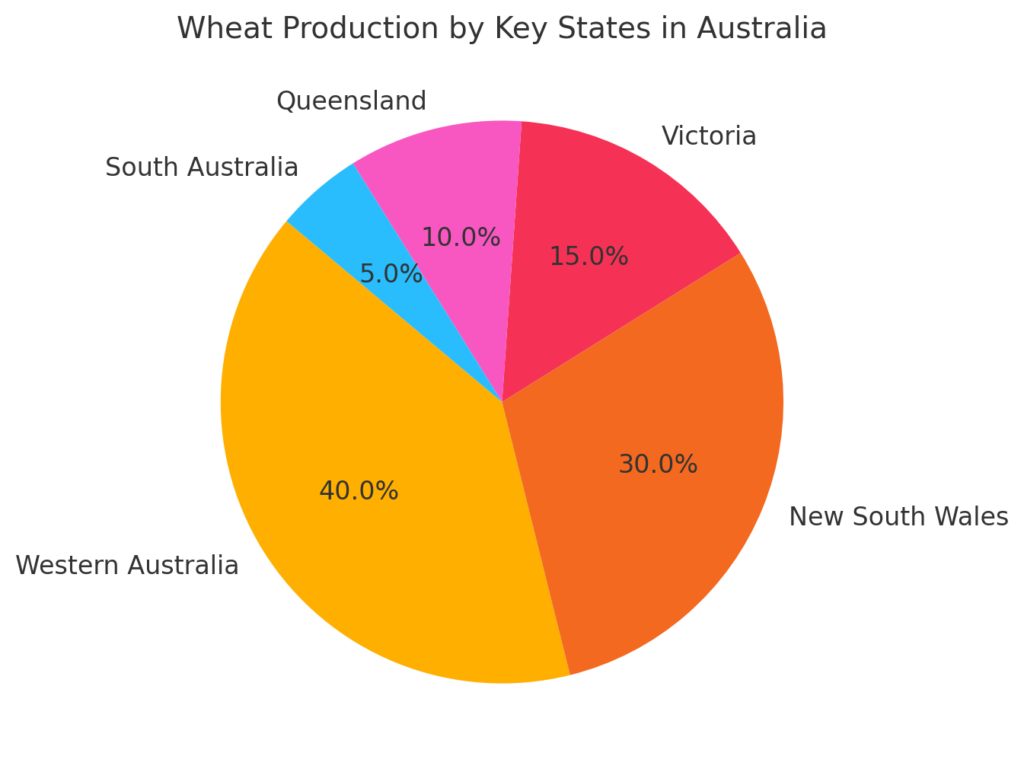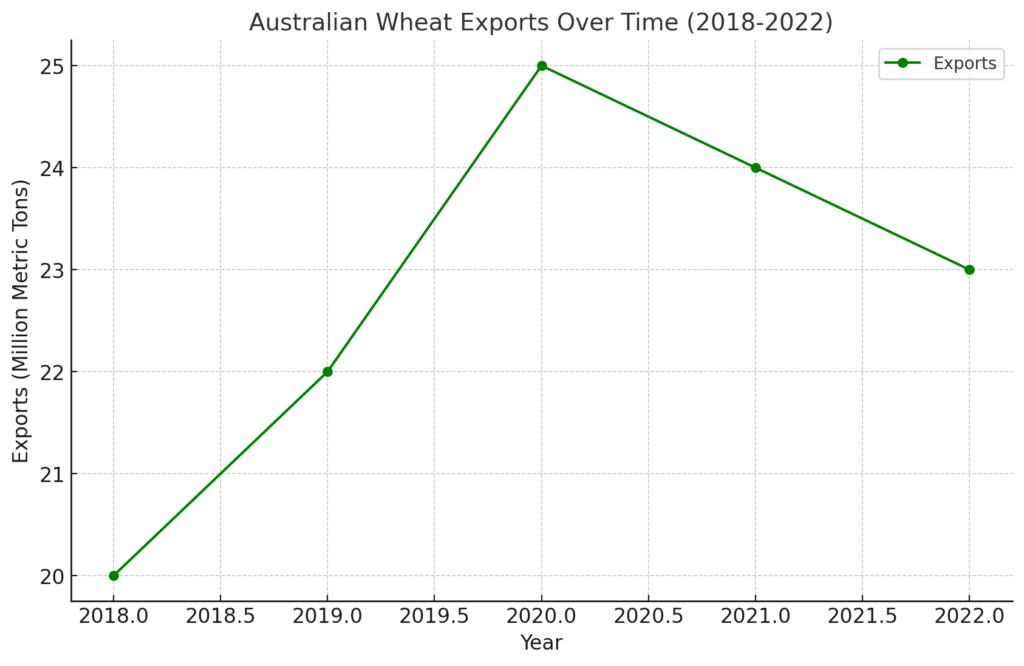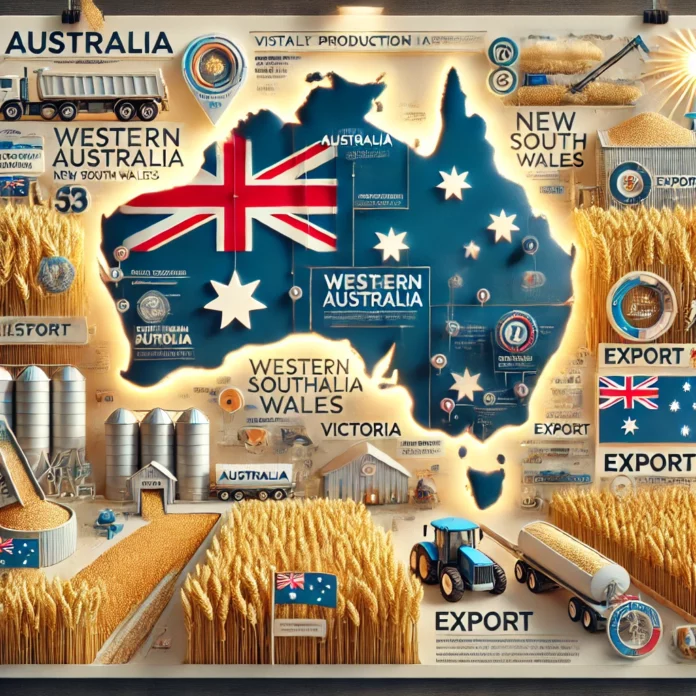Australia is one of the world’s leading wheat producers and exporters, known for its high-quality grain. With vast farmlands and a climate conducive to wheat cultivation, Australia’s wheat industry is a cornerstone of its agriculture sector. This article explores the largest wheat-producing regions in Australia, the companies that dominate the industry, and the innovations driving productivity and sustainability.

1. Western Australia: The Wheat Belt of Australia
Western Australia is the largest wheat-producing state, contributing significantly to the country’s total output.
- Production Share: Accounts for approximately 40% of Australia’s wheat production.
- Key Regions: Geraldton, Kwinana, and Albany zones are major contributors.
- Exports: Most of the wheat produced in Western Australia is exported to Asia and the Middle East.
- Innovation: Farmers utilize advanced no-till farming techniques and precision agriculture.
2. New South Wales: A Major Contributor
New South Wales is a critical player in Australia’s wheat industry, known for its high-quality grain.
- Production Share: Contributes around 30% of national wheat output.
- Key Regions: Riverina, Central West, and Northern Tablelands are prominent wheat-growing areas.
- Domestic Use: Supplies domestic flour mills and food manufacturers.
- Sustainability: Farmers emphasize water conservation and crop rotation to maintain soil health.
3. Victoria: A Leader in Premium Wheat Production
Victoria focuses on producing premium wheat varieties, including high-protein and specialty grains.
- Production Share: Contributes about 15% of Australia’s wheat production.
- Key Regions: Wimmera and Mallee regions are the primary wheat-growing zones.
- Focus Areas: Wheat from Victoria is primarily used in bread and other baked goods.
- Challenges: Variable rainfall affects yields, prompting a shift toward drought-resistant varieties.
4. Queensland: A Diverse Agricultural Landscape
Queensland has a smaller but significant wheat industry, leveraging its diverse agricultural conditions.
- Production Share: Produces around 10% of national wheat output.
- Key Regions: Darling Downs and Central Queensland are key contributors.
- Significance: Focuses on dual-purpose wheat, used for both grazing and grain production.
- Innovation: Farmers adopt mechanized farming and precision seeding techniques.
5. South Australia: Balancing Quantity and Quality
South Australia is known for balancing wheat quality and production volume.
- Production Share: Contributes approximately 5% of national wheat output.
- Key Regions: Eyre Peninsula and Murraylands are major wheat-growing areas.
- Exports: Supplies grain to Southeast Asian markets.
- Focus Areas: Farmers prioritize sustainable practices and efficient water use.

Leading Wheat-Producing Companies in Australia
- CBH Group: Australia’s largest grain exporter, primarily operating in Western Australia.
- GrainCorp: A key player in grain storage, handling, and marketing across eastern Australia.
- Glencore Agriculture: Focuses on grain trading and export logistics.
- AGT Foods Australia: Specializes in value-added grain products and exports.
Australia’s Role in the Global Wheat Market
Australia is a significant exporter of wheat, supplying premium grain to over 50 countries.
- Export Markets: Major buyers include Indonesia, China, Japan, and the Philippines.
- Global Share: Contributes around 10% of global wheat exports.
- Infrastructure: Advanced port facilities, like those in Fremantle and Newcastle, enable efficient grain shipments.
Technological Innovations in Australian Wheat Farming
Australia is a leader in agricultural innovation, with technologies driving efficiency and sustainability:
- Precision Agriculture: Use of GPS-guided equipment and satellite imagery for optimized farming.
- Drought-Resistant Varieties: Development of wheat strains adapted to Australia’s dry climate.
- No-Till Farming: Reduces soil erosion and improves water retention.
Challenges Facing Australia’s Wheat Industry
Despite its strengths, Australia’s wheat industry faces challenges:
- Climate Variability: Droughts and extreme weather affect yields.
- Global Competition: Competes with major exporters like Russia and the U.S.
- Rising Costs: High input costs for fertilizers, energy, and labor.
Conclusion
Australia’s largest wheat producers, from Western Australia to Victoria, contribute significantly to global grain markets. With a focus on quality, innovation, and sustainability, Australia remains a leader in the wheat industry. As global demand rises, the country’s ability to adapt to climate challenges ensures its continued success as a major wheat exporter.

